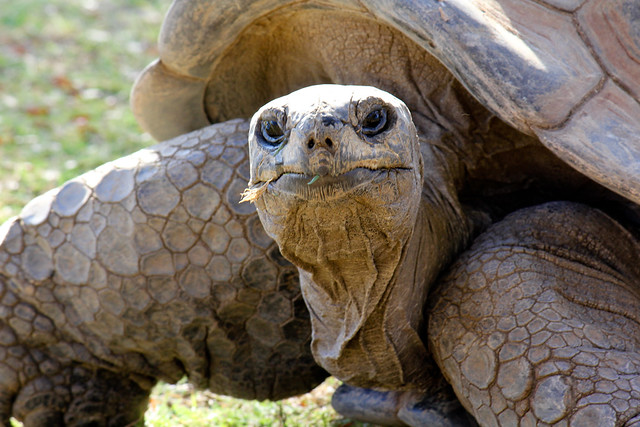There is a general belief that invasive species are inherently harmful to natural ecosystems. Up until now, most of my blog posts have solely focused upon the negative effects of invasive species. So instead I am going to change my attitude and look on the bright side of alien species.
For where there is a negative, surely there is always a positive?
In certain cases, alien species are actually quite beneficial and can be both economically and ecologically advantageous. Many invasive species serve important but under appreciated roles such as providing
desirable ecosystem services, replenishing human-damaged regions, serving as functional substitutes for extinct taxa and providing habitat or food resources to rare species (
Schlaepfer et al. 2011).
 |
| Catbird in a Honeysuckle |
Scientists from Penn State University looked at the role of
mutalism in determining the success of an invasive species.
Gleditsch and Carlo (2010) discovered that since the introduction of the non-native honeysuckle plant to Central Pennsylvania, the number of fruit-eating birds e.g. robins, catbirds in the area has grown four folds. The honeysuckle and bird communities have formed a mutualistic relationship.
The honeysuckle
comprises more than half of all the fruits available in the landscape so acts as a main source of food to the birds. In return, the birds benefit honeysuckle by dispersing the plant's
seeds across a wider geographical area, mainly in territories already affected by human activities.
Thus, if honeysuckle were to now be removed from this ecosystem, it would almost certainly harm many native bird species whom rely on honeysuckle as their major food source.
In the Hawaiian rainforest, non-native species of birds are now the primary dispersers of seeds and fruits of some native plant species as a result of native birds having become extinct (
Foster & Robinson 2007).
Furthermore, non-native species can also act as a catalyst for ecosystem restoration. For example, in Puerto Rico, former pastures with sparse vegetation and eroded soils are not readily recolonized by native trees. By contrast, non-native plantation trees are able to survive and so attract seed dispersers (
Parrotta 1999). Sometime, non-native species are deliberately introduced to fill an ecological niche formerly occupied by a closely related species like on the islands of Mauritius. The Aldabra giant tortoises (
Aldabrachelys gigantea) was introduced onto a few small islands, where they have successfully replaced the seed-dispersal functions of extinct native tortoises (
Griffiths et al. 2010).
 |
Aldabra Giant Tortoise
(Aldabrachelys gigantea) |
|
I have only scratched the surface of the numerous benefits invasive alien species can provide. Among the articles and papers I have read it appears that a bias persists against non-native species amongst the scientific community. Non-native species can cause the loss of biological diversity but as discussed they can provide wide ranging conservation benefits.
In the future, invasive
species could fill niches in degraded ecosystems and help restore
native biodiversity in an inexpensive and self-organized way that
requires little or no human intervention (
Gleditsch and Carlo 2010).








